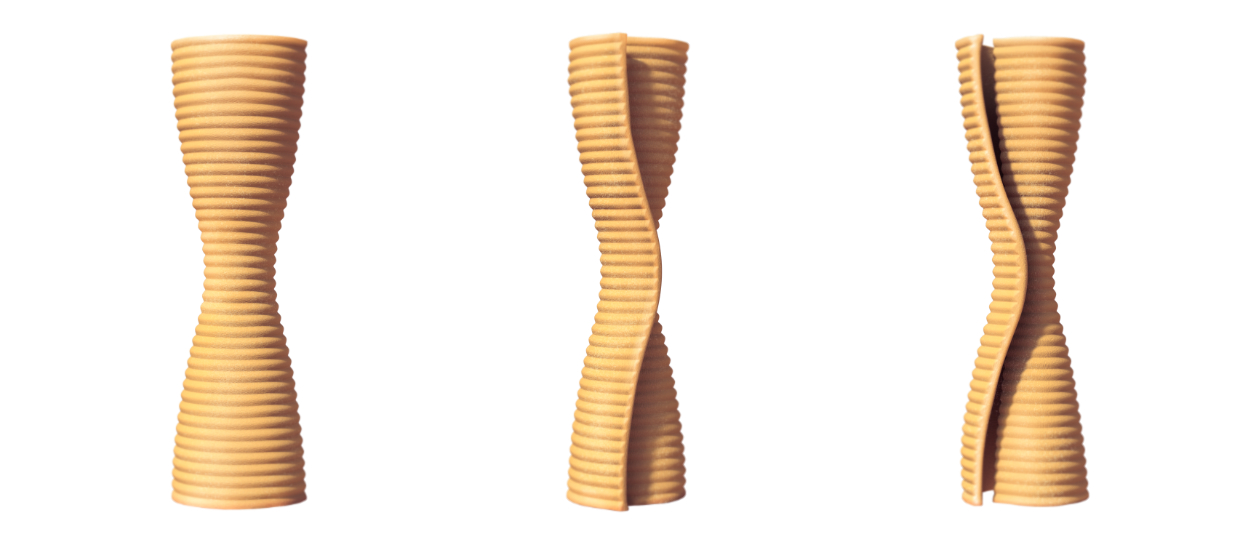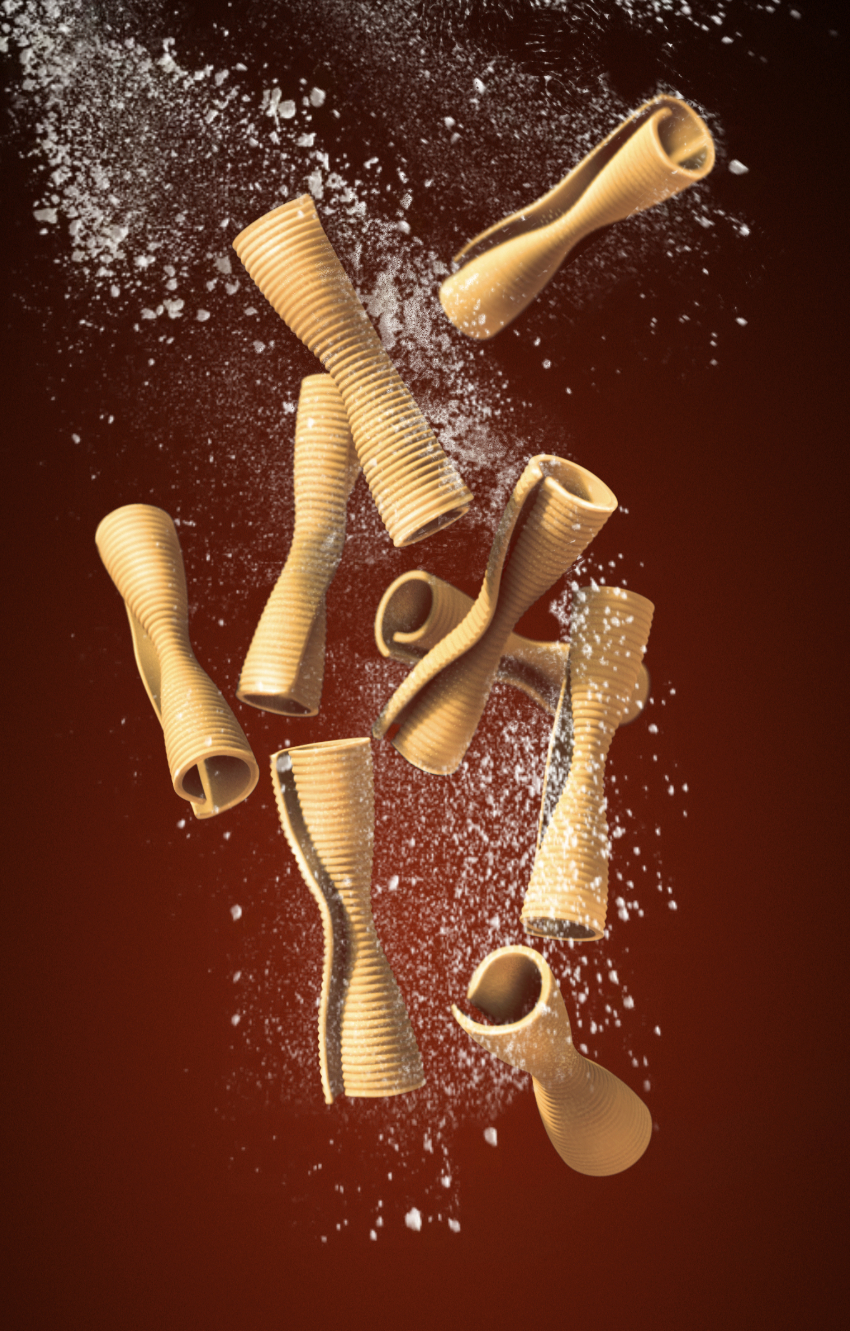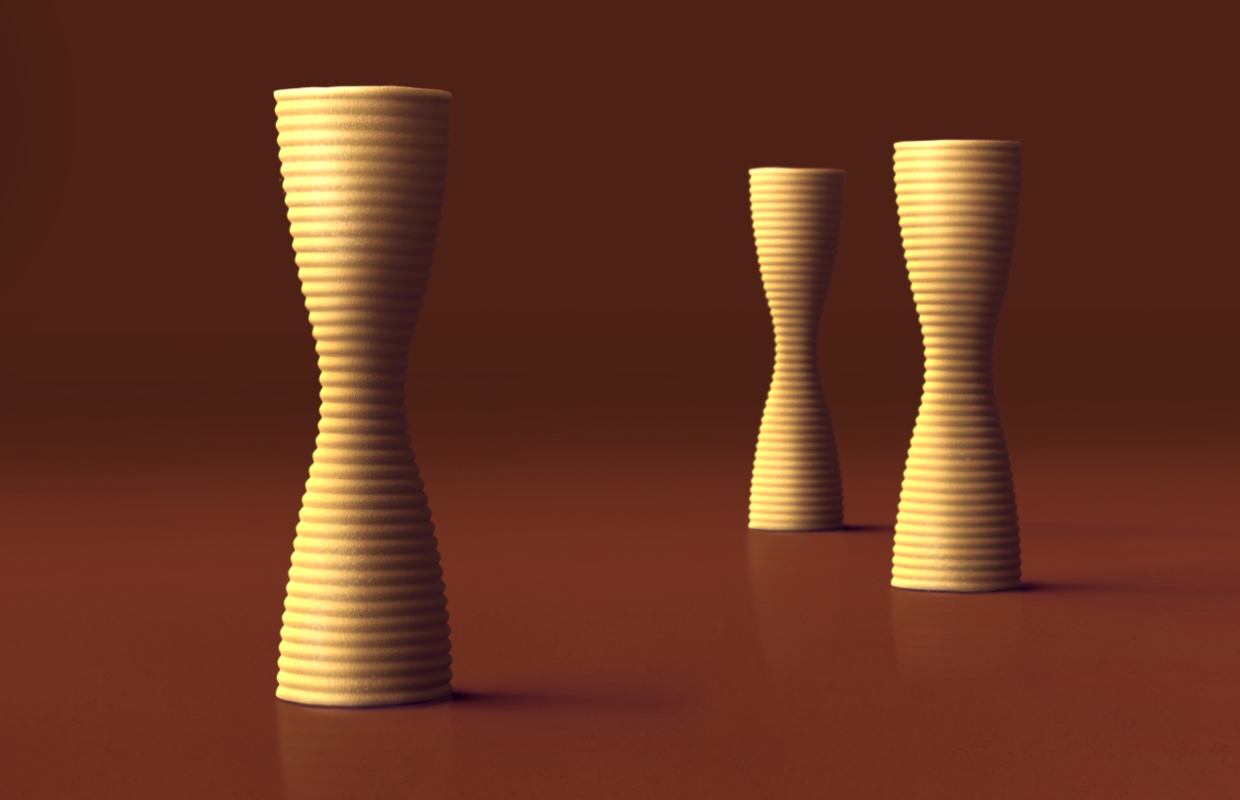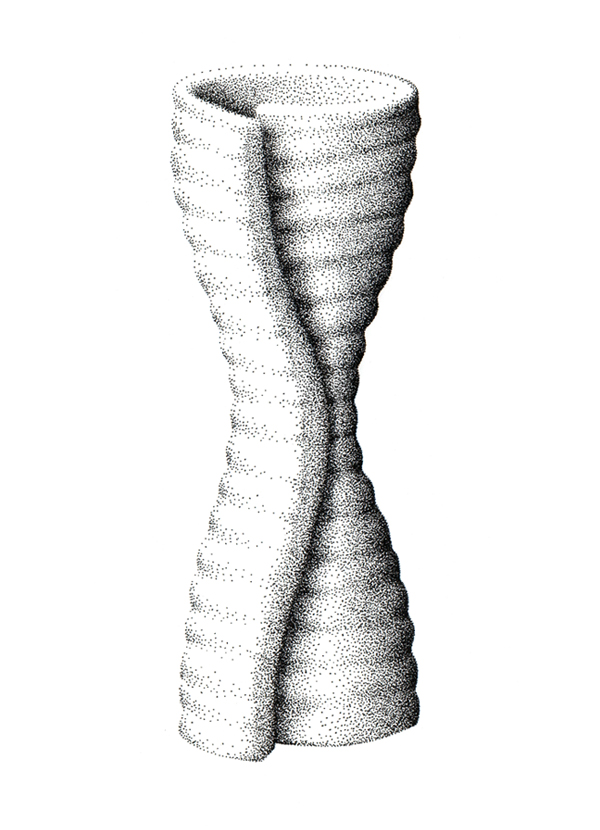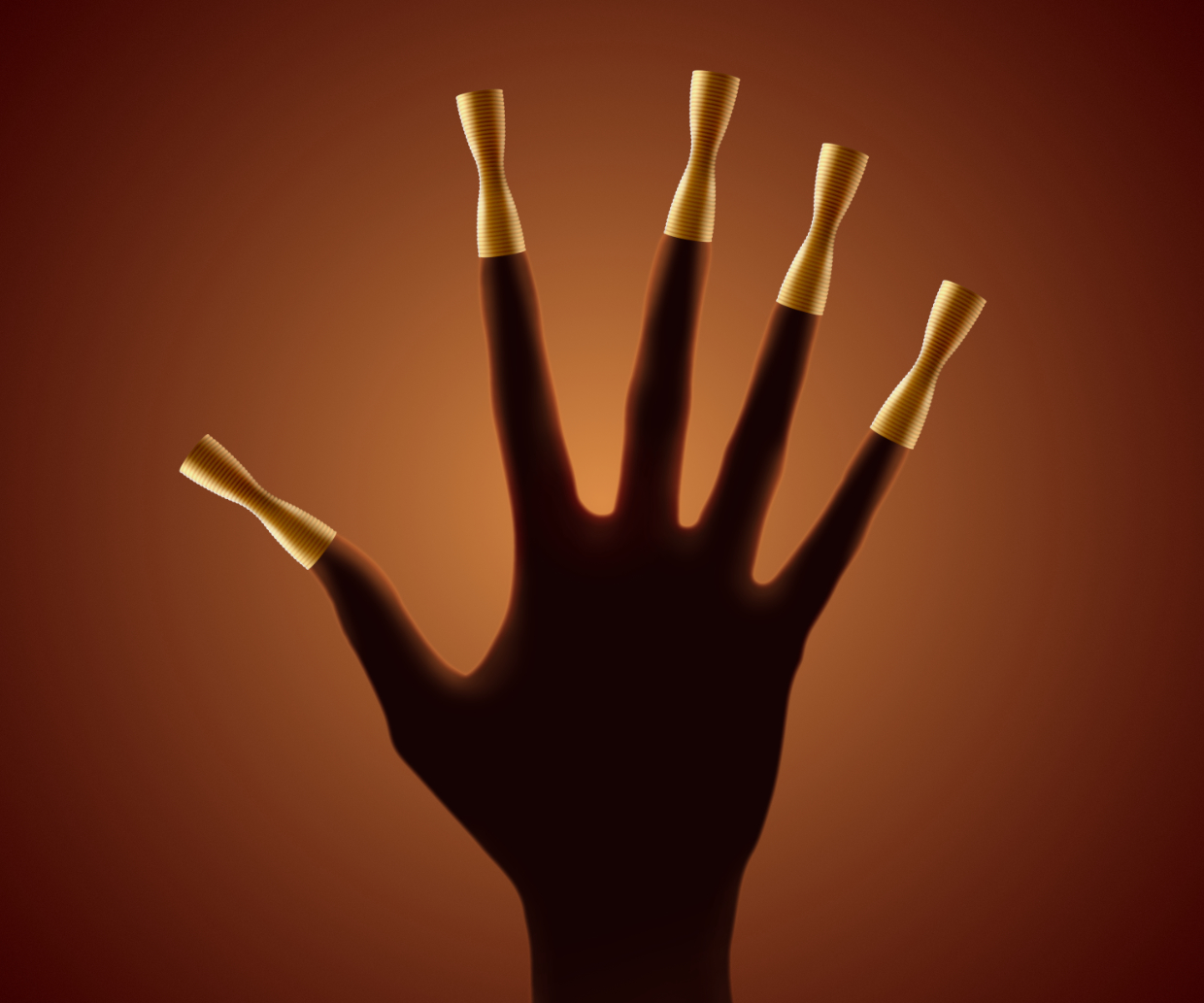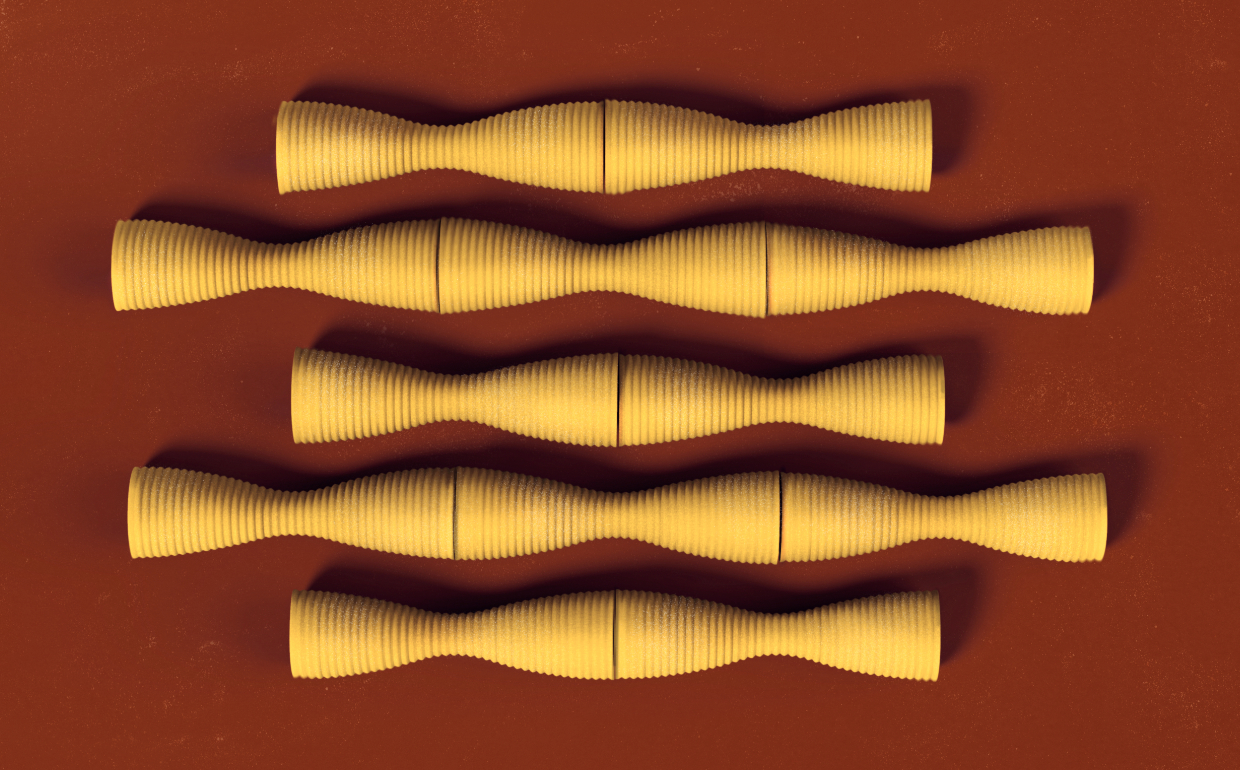Design
Clessidri
year / 2021
I have always appreciated farfalle for its simplicity, which derives from an elementary gesture. However, what fascinated me was the natural invitation that its shape expresses, explicitly indicating to be grasped at its centre. No other pasta shape exalts so well this relationship with the extension of our arm that is the fork. A gesture that is simple in itself, but which also allows, in the popular imagination, to determine how well the farfalla is cooked.
Would it be possible to translate this gesture into a form of pasta that would provide a different experience from that of the farfalle?
As a lover of tomato sauce, I often prefer to use other pastas that are more suitable for the dishes I cook. One that I particularly like is Malloreddus. These Sardinian gnocchetti manage to catch the sauce with surprising ease, as do most other extruded pastas. Their craft method of production using a ridged board was also a source of inspiration for my research.
So I studied a shape that could be easily extruded and produced using current technologies, while keeping in mind, as with the Malloreddus, that the pasta could be handmade. In this case, two fingers shaping the dough on a board with a special pattern.
In designing the Clessidri, I imagine a gentle curve that rolls up on itself, reflecting the invitation inspired by the farfalle. A feminine silhouette, both subtle and decided, which matches the sauce in two opposing cavities. As the protagonist of the dish it composes, its ridged architecture will preserve its structure and thus give the plate its character, while maintaining a visual flexibility appropriate to the marriage of different ingredients, both hot and cold.
While the name obviously suggests their archetypal shape, it also evokes the relationship between pasta and time. Because a clepsydra is nothing other than the guardian of a time that never stops flowing.
So how many minutes will pass before the Clessidri are cooked?
